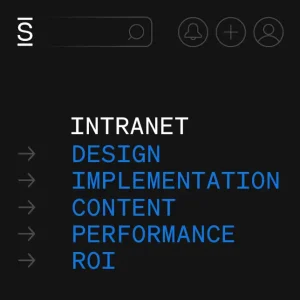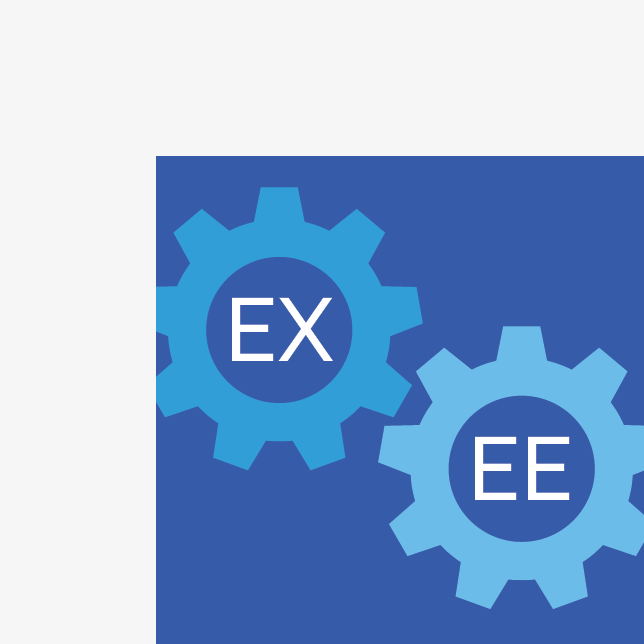Human beings are built to be communal. People thrive off the company of others, especially in the workplace, and it fuels creativity and encourages the performance of fellow employees. Not that it has to be consistently competitive, but certainly socializing with colleagues can inspire our mode of thinking.
In a Scientific American article titled “Where Creativity Comes From,” psychologist Michael Muthukrishna of the London School of Economics stated, “In this way, sociality may be the mother of invention as well as intelligence: the size and interconnectedness of society, enabling us to connect and share more ideas.”
In other words, the more we are interconnected, whether in social or work settings, the more ideas we can generate through our intelligence and share with others. It is the connection that sparks our creativity. But what about the virtual reality many are working in now? How can we bridge the gaps with engagement to continue the social growth of innovation and creativity? What is the best way to facilitate this? At Simpplr, one way we suggest is virtual engagement activities.
What are Virtual Engagement Activities
Let’s make this simple, virtual engagement activities are team-building exercises. They are meant to promote bonding and alignment within your team, goodwill between departments, or promote a culture of inclusivity across the organization. It motivates people to not only work together but to work together better. While many employees work independently, they still need workplace collaboration between teams and departments.
Lastly, you are creating a positive experience employee experience. You don’t want them to merely clock in, do their job, and clock out. Give them something to look forward to. You want them to have ‘buy-in’ to their work environment, believing they would rather have a job at your company than someplace else. Employee engagement activities help promote cohesive teams that are efficient and productive.
Here are some excellent reasons to utilize such activities:
- Builds and grows communication skills-Every manager or director should put this at the top of their list for team-building. Communication is not only about expressing yourself. It’s also about building trust. Without trust in your coworkers, you won’t communicate with them on any level. When employees feel safe in their workspace, they share and collaborate more freely.
- Fosters problem-solving and planning-Everyone has something that they are good at. Some are great listeners and planners. Others are problem solvers. Engagement activities allow colleagues to get to know each other and lean on each other’s productive values. When faced with “real” issues to overcome, getting everyone working on the same page can alleviate friction in the problem-solving process. It takes practice, and that can happen with virtual engagement activities.
- Establish peaceful conflict resolution-Conflict resolution can be painful but necessary. If you are proactive about preventing conflicts, resolving them is more manageable. The time employees spend in contention with others is time lost to your company’s productivity. Exercises in empathy-building and seeing the other person’s situation and perspective can prove fruitful. Conflict in the workplace affects both individual and communal creativity. When the workplace is virtual, people are at a disadvantage of knowing people outside of calls or video platforms. An effort must be made to mitigate such situations, and virtual engagement activities can help.
- Encourage long-term connections and comradery-Knowing people beyond weekly updates or status meetings. Understanding our fellow workers and socializing builds long-term relationships and friendships that aid a positive work environment. Also, consider what connections you can establish across departmental lines or the enterprise. Your company can have a referring advocate when an employee moves on from a business sense. That is if they had a good work experience with you.
- Motivates teamwork through fun socializing-Here is where the ‘good’ competition comes in. In an upbeat work setting, competition has been known to up productivity. But competitive productivity can be fun. You can demonstrate how to accomplish this optimistically through virtual engagement activities. Additionally, fun teamwork reveals your inspiring hidden leaders. Negative, forceful leadership is never a good part of your business mix. Look for individuals during these activities that encourage and lead from the pack!
- Improves company culture-The first thing you need to establish in your company are your company’s values, mission, and goals. And they can’t be something hanging on the wall. They must be seen and practiced every day by your leadership and employees. Engagement activities allow you to see what employees want, need, and where your company culture needs to improve. They create level playing fields, remove toxicity from the environment, and with the right facilitator, can bring everyone into a more inclusive environment.
Through these training sessions, you can identify strengths weaknesses, and best of all, show your people how to come together in a holistic way to accomplish goals. They are beneficial to your company–the better the team, the more promising their outcomes. Consider it an investment in your business. And if you want to see the ROI value, choose the best activities that suit your company best. However, don’t be afraid to make your teams stretch in their capabilities. Growth comes from being connected and educated in a community—even virtually!
Types of Virtual Engagement Activities
We have all heard the difficulty of keeping employees engaged, especially in the current remote reality workplace. However, plans, efforts, and activities ensure employees are kept involved, feel valued, and lift their morale no matter where they are. Remember, however, that every endeavor should have a goal of not only engaging your employee but retaining them. It would help if you treated as you would your customers. Why? Keeping current customers costs less than acquiring a new logo. The same holds for your employees. The cost to retain your workforce is less expensive than hiring replacements, especially in the current market. Put effort into employee retention, and your effort will pay off. And employee engagement activities are an incredible factor in that solution.
The key to your team-building activities must be fun and engaging. But is it necessary to have your engagement activities in person? No, you don’t. With the onset of remote work stemming from COVID-19 and the global nature of many companies, disparate employees can be included in company events virtually with the right platform.
Begin with a calendar. Times of the year can factor into themes behind your events. In early spring, you can celebrate the Lunar or Chinese New Year. Cook along events are very popular and can help individuals appreciate other cultures and food. There are also international food boxes you can send to employees to try and review foreign cuisine via video. Food and drink are always a good bonding experience. Mixology classes or virtual happy hours allow employees to relax and talk over their favorite drinks—even hot cocoa. Yes, gourmet hot cocoa and coffee are a thing.
Think about other cultural dances and songs that can be shared either by employees or facilitators. Ever seen a Maori Haka dance? What about Bhangra folk dancing from India? There are also virtual music festivals. Yes, there are indeed DJs that specialize in virtual events. Karaoke anyone? A common icebreaker question is, “What’s your go-to karaoke song?” Now, you can share it with coworkers in an online karaoke session.
Keeping the theme of physicality, virtual yoga has become very popular. There are also Peleton or other workout regimens that can be incorporated into a class to include everyone. Want to see your competition explode? Hosting company wellness, weight loss, or “Let’s get healthy” projects can benefit your employees personally and professionally. There are also meditation and mindfulness classes that encourage a relaxed yet focused work environment.
Games are always a winner. Events bring out the most positive competition from virtual Bingo, Poker, or an online Casino night. There are also online versions of favorite television games shows. Scavenger hunts, murder mysteries, and trivia games can be a fun and bonding time for all. Whatever you choose, keep it light-hearted and engaging for all participants.
If your teams are opening up to one another, consider a virtual show and tell or home tour. Online continuing education classes with an internal certification attached will guarantee attendance. After courses are completed, utilize sessions to celebrate the graduates. Another virtual activity is an “Ask me anything meeting” or a one-on-one with the CEO or company founder.
Future Enablement
Once you have taken your teams through these types of exercises, you have proved to them that partnership works. So, build off that! Morale is critical during trying times. Keep your activities uplifting, showing how much you appreciate your employees. Do not settle on poor excuses for employee appreciation, such as a pizza party. Step it up with engagements that are as creative and innovative as you want your employees to be.
Additionally, make sure that these types of activities are frequent. According to a Gallup article, “Four Steps to Improve Employee Engagement,” engagement exercises should be an ongoing process. “One of the most common mistakes that leaders make is to approach engagement as a sporadic exercise in making their employees feel happy,” the article stated. “Employees need ongoing purpose and development, not biannual perks, to achieve more for your organization.”
To ensure that your virtual engagement activities are a success, request feedback. Whether it is an exit poll or just an open-air question for the group, you will understand if it was a positive experience for all. Also, rate teams’ performances as it will give you insight into individuals and groups that may need a little more attention to promote cohesive performances. As always, listen closely to all responses. It is not only about the activity, and it’s about the individual who experienced it.
Remember past engagement activities from previous years. Were they effective? Did they encourage team-building? What strategies and insights did you learn about your teams and employees? Are they worthy of a repeat? Understanding the activities goals and the experience they were supposed to create will help your teams work more collaboratively in the future and achieve your company’s goals.
















